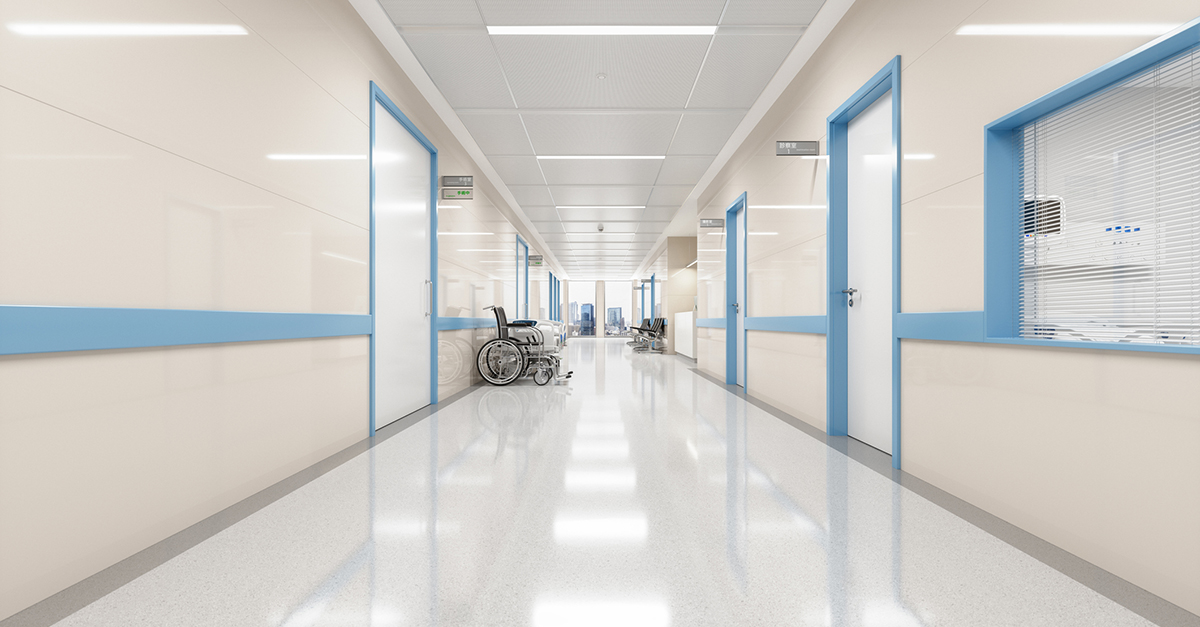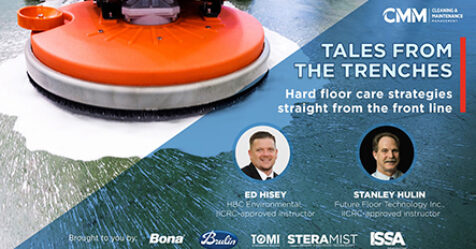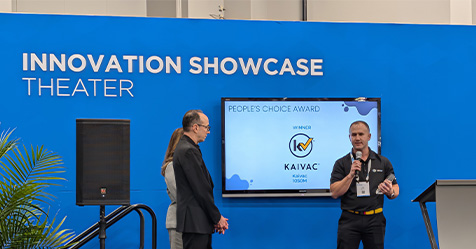A person’s first impression of cleanliness in a healthcare facility is typically based on the appearance of the floor. One element of a clean floor is effective cleaning and disinfecting regimens to support the infection prevention programs that healthcare facilities require.
Floors should not be ignored when it comes to mitigating the spread of infectious diseases. A 2017 systemic review by Rashid, et al. found that microbial contaminants, including methicillin-resistant Staphylococcus aureus, Clostridium difficile, and multidrug-resistant Gram-negative species, which cause healthcare associated infections can be found on the floor. However, the floor disinfectants that kill these contaminants can be caustic or are not compatible with the floor finish, which can leave these surfaces looking dingy, dull, or filmy.
An integrated program that utilizes the appropriate products, procedures, tools, training, and measurement processes is key. With the correct components in place, floors will not only look their best, but also reduce the risk of transmitting an infectious disease.
Floor care in healthcare facilities takes effort because it requires a maintenance process that is efficient, reduces wear, and extends the life of the floor. Skipping steps could result in long-term labor and increased expenses for the facility. These steps include:
Step 1. Assess the needs and objectives of the facility. Facilities have many key stakeholders –and they may have different needs. For example, the infection preventionist is probably more concerned with the sanitizing and disinfecting practices than the look of the floors, while hospital management wants both.
Environmental services (EVS) professionals are tasked with bridging the gap between infection prevention and floor maintenance. EVS professionals must also consider workflows and optimal times to address certain areas of the facility. Multiple substrates and traffic patterns can create complex needs for total floor maintenance, and understanding the facility’s current practices can help start the process to standardize and optimize with a best-practice approach. This is important for planning when and how to replace floors in the future.
During the assessment, it is important to understand what challenges may be faced and address them for corrective protocol implementation. Challenges could include:
- Having enough properly trained staff to do the work
- Having access to the floors in patient care areas not only for daily maintenance, but also for restorative processes to meet appearance requirements and protection from wear-and-tear damage
- Creating a streamlined and simple program to address the various flooring substrates and traffic levels found throughout the facility
Step 2. Select a robust floor maintenance program. A floor maintenance program should include regular, periodic, interim, and restorative maintenance. This includes using the right products, procedures, and frequencies because the wrong product could void the floor manufacturer’s warranty and mean significant expense to replace damaged flooring. Ultimately, deploying industry best practices with a streamlined, standardized approach can help achieve optimal performance.
Considering the different flooring surfaces throughout a facility, it can be difficult to know where to begin when developing a maintenance program.
First things first: Refer to the manufacturer’s recommendations and choose a compatible sanitizer/disinfectant that is registered with the Environmental Protection Agency (EPA). This will not only help ensure the warranty of the floor, but also save time and money by eliminating unnecessary maintenance.
Consistent cleaning and maintenance regimens are designed to keep floors clean and slip resistant, as well as aesthetic with a low risk of pathogen transmission. The frequency of these processes may vary based on patient vs. non-patient areas, traffic levels, and patterns. Additionally, floor finishes and coatings can help protect the flooring substrate from soil and wear. Determining frequency is a critical step for an effective floor care process.
Interim and restorative maintenance procedures, such as scrubbing and recoating or stripping, can restore floors to an acceptable level when they no longer appear as desired. However, these labor-intensive processes will not be needed as often if consistent cleaning and maintenance regimens are in place.
Streamlining floor care maintenance through the consolidation of products and using the right tools and machines can help when trying to do more with less. A chemical and equipment supplier can provide guidance to tailor the best solution.
Step 3. Implement a training program and materials. EVS professionals should work with their manufacturers to develop a program with customized tools that help with training and best practice adoption. They should also ensure that staff is trained with the products and procedures to correctly do the job. Some manufacturers have excellent training and application tools available to ensure consistent and thorough practices.
Step 4. Round and inspect. EVS professionals should establish a rounding routine to assess the various areas of the facility for the impressions they make. They should also identify areas for intervention and provide both feedback and tools to staff to help drive continuous improvement.
First impression
As in any case, a first impression is paramount. But in a healthcare facility, a good first impression can improve satisfaction, as well as patient and guest confidence and safety. An integrated floor maintenance program using the appropriate products, procedures, and tools is key to creating a safer and more satisfying environment of care.



